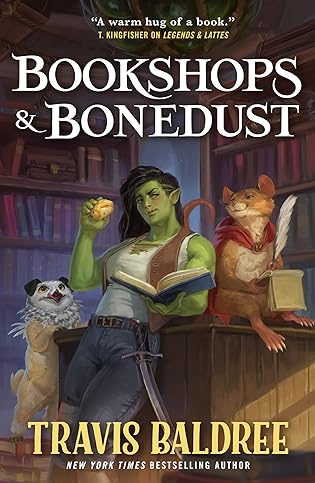 Bookshops & Bonedust (Legends & Lattes, #0) by Travis Baldree
Bookshops & Bonedust (Legends & Lattes, #0) by Travis Baldree Format: eARC
Source: supplied by publisher via NetGalley
Formats available: paperback, ebook, audiobook
Genres: cozy fantasy, fantasy
Series: Legends & Lattes #0
Pages: 352
Published by Tor Books on November 7, 2023
Purchasing Info: Author's Website, Publisher's Website, Amazon, Barnes & Noble, Kobo, Bookshop.org, Better World Books
Goodreads
When an injury throws a young, battle-hungry orc off her chosen path, she may find that what we need isn't always what we seek.
In Bookshops & Bonedust, a prequel to Legends & Lattes, New York Times bestselling author Travis Baldree takes us on a journey of high fantasy, first loves, and second-hand books.
Viv's career with the notorious mercenary company Rackam's Ravens isn't going as planned.
Wounded during the hunt for a powerful necromancer, she's packed off against her will to recuperate in the sleepy beach town of Murk—so far from the action that she worries she'll never be able to return to it.
What's a thwarted soldier of fortune to do?
Spending her hours at a beleaguered bookshop in the company of its foul-mouthed proprietor is the last thing Viv would have predicted, but it may be both exactly what she needs and the seed of changes she couldn't possibly imagine.
Still, adventure isn't all that far away. A suspicious traveler in gray, a gnome with a chip on her shoulder, a summer fling, and an improbable number of skeletons prove Murk to be more eventful than Viv could have ever expected.
My Review:
Legends & Lattes was all about Viv fulfilling a dream that she’s had for a very long time, to retire from the mercenary life and open a coffee shop, a place where she can hang up her sword (literally) and dispense peace and life-giving liquid in equal measure – instead of dealing death to people who generally deserved it.
The story in Bookshops & Bonedust is the story of way back when Viv was considerably younger and a whole lot dumber (as we often are) and first caught the inkling of that dream. Not in bustling Thune but in tiny, tacky, tawdry Murk, a seaside town that has certainly seen better days.
But it’s the most convenient place for Rackham’s Raiders, the mercenary company that young Viv is signed up with, to deposit her after she gets herself ahead of her team in a fight and gets skewered in the leg for her trouble. Or her hubris. Or just her belief that as a young orc in her first big skirmish she’s both immortal and indestructible.
Of course she’s neither, and has the bleeding holes in her leg to prove it. So she’ll be rusticating and recovering in Murk while Rackham’s Raiders are off to bring down Varine the Necromancer and her horde of skeletal warriors.
Viv is scared that Rackham won’t come back for her. She’s worried she won’t heal properly. But more than anything else, she’s frightened half to death that she’ll go out of her mind with boredom while she’s stuck, literally on her ass, in Murk.
Which is what leads her, albeit very indirectly and with a whole lot of excruciating steps, to Maylee’s bakery and Fern’s bookshop. The bakery because damn it smells good and the dwarf baker looks every bit as yummy as her freshly baked wares. The bookshop because there’s nothing to while away a whole lot of quiet time quite like a good book. Or a whole series of them.
And that bookshop, Thistleburr Booksellers, looks like it has lots and bunches of books, all sort of moldering away in a place that reeks of mold and moist and uncleaned rug and unwashed gryphlet. It smells ‘yellow’ to Viv, and any pet owner knows EXACTLY what that means.
But that doesn’t stop Viv from stepping in to while away a few minutes as she certainly has plenty to spare. The bookshop owner, desperate for both companionship and custom, induces Viv to take a book that she is certain will suck the orc right into its pages for a few hours.
And she’s right – of course she’s right – and it’s the beginning of the kind of friendship that will save them both, the store, and eventually and surprisingly the entire town of Murk.
Because Rackham’s Raiders are chasing that necromancer. A necromancer who is already on her deadly and deathly way to Murk – where Viv and Fern are waiting to beat her. Not with swords – but with just the type of cleverness that eventually will make Viv and her coffee shop such a success in Thune.
All it will take is a bit of ingenuity and a whole lot of help from Viv’s newly found friends.
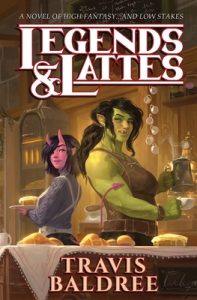 Escape Rating A+: Anyone who sunk straight into the cozy fantasy vibe of Legends & Lattes is going to sink into Bookshops & Bonedust and not emerge for much of anything until they fall out the other side with a huge smile, a taste for Maylee’s lassy (molasses) buns and a hankering for more stories just like this one – especially for more set in this marvelous world.
Escape Rating A+: Anyone who sunk straight into the cozy fantasy vibe of Legends & Lattes is going to sink into Bookshops & Bonedust and not emerge for much of anything until they fall out the other side with a huge smile, a taste for Maylee’s lassy (molasses) buns and a hankering for more stories just like this one – especially for more set in this marvelous world.
What makes this world, and this cozy fantasy style, just so much of a comfort read is that, although bad things do happen to good people, that is most emphatically NOT what the story is about. It’s not about big wars and bigger politics and gigantic battles between good and evil resulting in stupendously high butcher’s bills.
Not that there isn’t danger, and not that there isn’t a confrontation. Because there is most certainly both along with plenty of tension, both dramatic and romantic, to push the whole thing along.
But the way that things get solved and resolved is through less bloodthirsty means – and just as occurred in Legends & Lattes, quite often problems, from small to world-shattering, get solved with a whole lot of ingenuity and more than a bit of help from the friends – and even the frenemies – that Viv has made along the way.
So it’s all cozy in the best way, where the reader slips under a warm blanket of story and gets told a marvelous tale that displays more of the best in people than it does the worst.
Even better, Bookshops & Bonedust, while it has all the charm of Legends & Lattes, is a prequel and not a sequel. Meaning that if you somehow missed the sensation that is Legends & Lattes, you can start here. The story, after all, does start here. If this is where you start, you’ll be thrilled and charmed and ready to start Legends the minute you finish.
But if you started with Legends, reading Bookshops & Bonedust will almost certainly inspire you to pick up Legends again the moment you finish, so you can discover how all the little clues about Viv’s later adventures fit into her first one. I know it certainly inspired me! Which is a good thing because, both fortunately and unfortunately at the same time, the author has three more cozy fantasies lined up, but the first won’t be published until 2025. Plenty of time to reread – or maybe listen this time around – to both Legends and Bookshops (and maybe my other cozy favorite, Can’t Spell Treason without Tea) before my next visit with Viv!

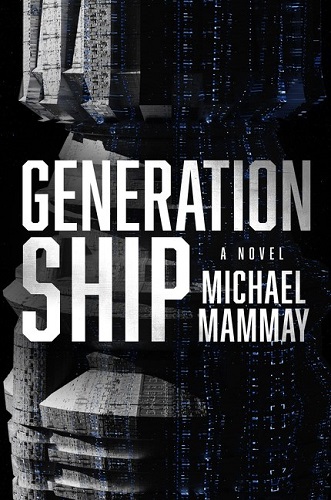 Generation Ship by
Generation Ship by 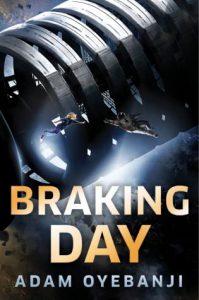 By seeing the situation from so many sides we’re able to get inside the life of the ship, AND the life on the ship, which are not nearly as much the same things as everyone believes. We’re watching a world come apart – even if that’s what was always supposed to happen. And it’s utterly fascinating as the players negotiate and maneuver themselves into a situation that is nothing like the first crew expected.
By seeing the situation from so many sides we’re able to get inside the life of the ship, AND the life on the ship, which are not nearly as much the same things as everyone believes. We’re watching a world come apart – even if that’s what was always supposed to happen. And it’s utterly fascinating as the players negotiate and maneuver themselves into a situation that is nothing like the first crew expected.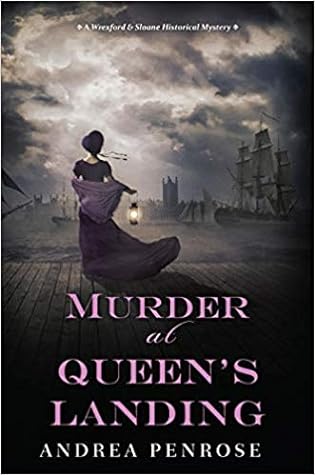 Murder at Queen's Landing (A Wrexford & Sloane Mystery, #4) by
Murder at Queen's Landing (A Wrexford & Sloane Mystery, #4) by 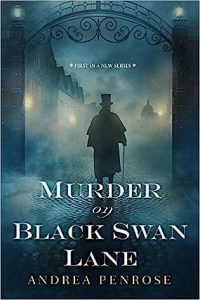 Wrexford and Sloane are going to need the services of Professor Sudler’s mechanical Computing Engine (modeled after Charles Babbage and his Difference Engine) to calculate whodunnit and particularly why it was done in this fourth entry in the
Wrexford and Sloane are going to need the services of Professor Sudler’s mechanical Computing Engine (modeled after Charles Babbage and his Difference Engine) to calculate whodunnit and particularly why it was done in this fourth entry in the 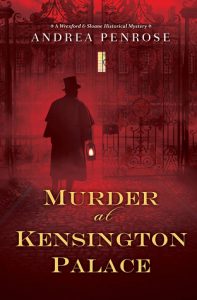 Escape Rating A: You wouldn’t think that it would be possible to make what is ultimately a financial crime be all that fascinating, but the machinations of arbitrage that turn out to be the center of this criminal conspiracy are both easy enough to follow and absolutely deadly in their application.
Escape Rating A: You wouldn’t think that it would be possible to make what is ultimately a financial crime be all that fascinating, but the machinations of arbitrage that turn out to be the center of this criminal conspiracy are both easy enough to follow and absolutely deadly in their application. Two final notes before I leave you to pick up the
Two final notes before I leave you to pick up the 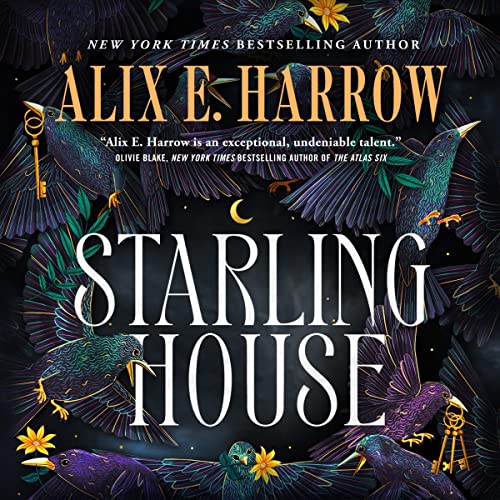 Starling House by
Starling House by 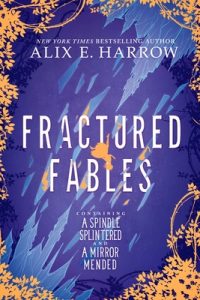 I took this journey in audio, with Natalie Naudus as the most excellent narrator. As a narrator, she seems to specialize in heroines who think that everything is all their fault and that they have to do it all alone, and her voice made me think of her other characters, Emiko Soong in
I took this journey in audio, with Natalie Naudus as the most excellent narrator. As a narrator, she seems to specialize in heroines who think that everything is all their fault and that they have to do it all alone, and her voice made me think of her other characters, Emiko Soong in 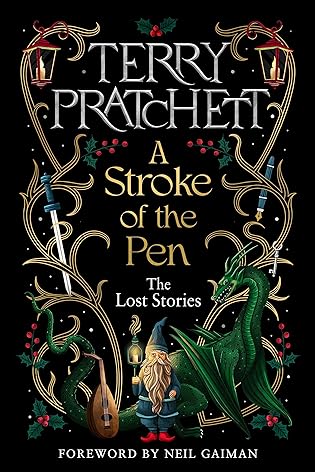 A Stroke of the Pen: The Lost Stories by
A Stroke of the Pen: The Lost Stories by 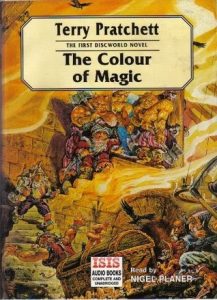 Two of those available titles were
Two of those available titles were 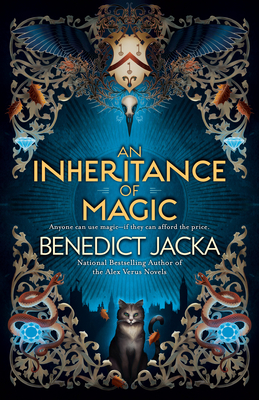 An Inheritance of Magic (Stephen Oakwood, #1) by
An Inheritance of Magic (Stephen Oakwood, #1) by 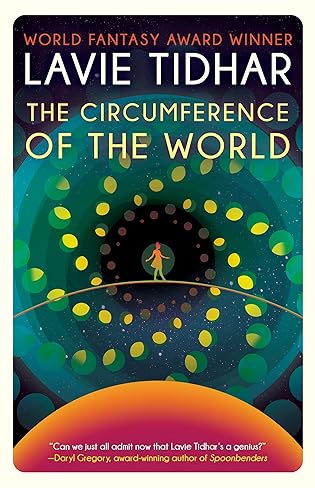 The Circumference of the World by
The Circumference of the World by  Shadow Speaker (The Desert Magician's Duology, #1) by
Shadow Speaker (The Desert Magician's Duology, #1) by 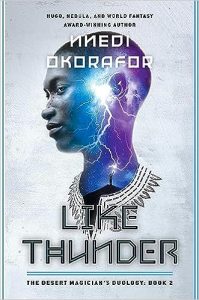 Which means that while the narrator, Délé Ogundiran, does an excellent job of standing in as Ejii’s voice, that may not be true for the second book in the duology, which will be Dikéogu’s story. Hopefully by the point in Dikéogu’s life when that story takes place, his voice will have dropped.
Which means that while the narrator, Délé Ogundiran, does an excellent job of standing in as Ejii’s voice, that may not be true for the second book in the duology, which will be Dikéogu’s story. Hopefully by the point in Dikéogu’s life when that story takes place, his voice will have dropped. Osprey (Miranda Chase NTSB, #13) by
Osprey (Miranda Chase NTSB, #13) by 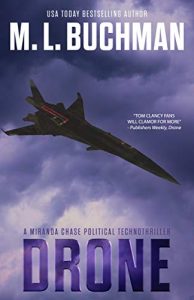 Escape Rating A+: This was one of those books that turned out to be a much harder read than I was expecting – even as it sucked me right in and wouldn’t let me go until the end. By saying Osprey is a ‘hard read’ I mean that in the sense that, 13 books into this series, I’ve become very fond of Miranda and her team and hate seeing any of them in serious distress. But it’s clear that this is the 13th book in the series for a reason in that it seems like all the bad luck and worse trouble in Miranda’s life comes home to roost in this one and probably won’t leave anytime soon.
Escape Rating A+: This was one of those books that turned out to be a much harder read than I was expecting – even as it sucked me right in and wouldn’t let me go until the end. By saying Osprey is a ‘hard read’ I mean that in the sense that, 13 books into this series, I’ve become very fond of Miranda and her team and hate seeing any of them in serious distress. But it’s clear that this is the 13th book in the series for a reason in that it seems like all the bad luck and worse trouble in Miranda’s life comes home to roost in this one and probably won’t leave anytime soon.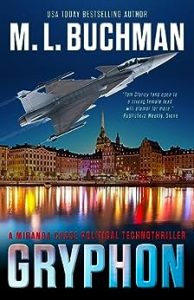 Let’s just say that on Miranda’s personal front, this is a heartbreaking story and it’s hard to watch her even begin to go through the inevitable fallout. Howsomever, as one of the strengths of this series is the way that the characters and relationships change and grow over time, Miranda’s situation is one that I expect to see explore and change and resolve over the next several books in the series, starting with
Let’s just say that on Miranda’s personal front, this is a heartbreaking story and it’s hard to watch her even begin to go through the inevitable fallout. Howsomever, as one of the strengths of this series is the way that the characters and relationships change and grow over time, Miranda’s situation is one that I expect to see explore and change and resolve over the next several books in the series, starting with 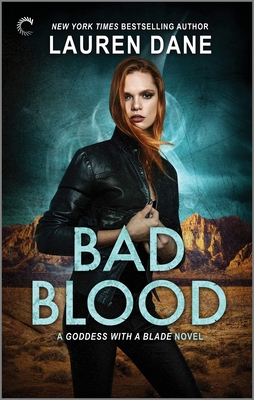 Bad Blood (Goddess with a Blade, 7) by
Bad Blood (Goddess with a Blade, 7) by 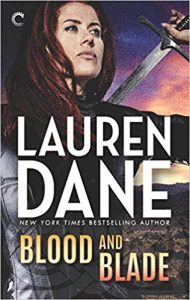 Getting back to Rowan, however, there’s an element of each book in the series where Rowan begins the story in the process of dealing with the fallout from the last clusterfuck she had to fix. And that’s certainly true in Bad Blood.
Getting back to Rowan, however, there’s an element of each book in the series where Rowan begins the story in the process of dealing with the fallout from the last clusterfuck she had to fix. And that’s certainly true in Bad Blood.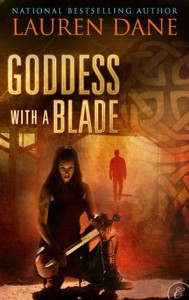 Escape Rating A: I have a soft spot in my heart for the entire
Escape Rating A: I have a soft spot in my heart for the entire